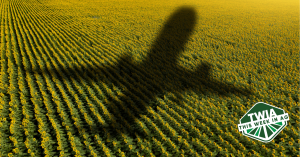Dr. Richard T. Lamar and Dr. Hiarhi Monda of our Humic Research Laboratory, with assistance from analytical chemist Ryan Fountain, have published a methodology video in the biochemistry section of the peer-reviewed online video journal, JoVE.
The video, Quantification of Humic and Fulvic Acids in Humate Ores, DOC, Humified Materials and Humic Substance-Containing Commercial Products, shows the step-by-step laboratory methodology (the New Standard Method) for gravimetric quantification of humic substances (e.g., humic and fulvic acids) on an ash-free basis, in dry and liquid materials from soft coals (i.e., oxidized and non-oxidized lignite and sub-bituminous coal), humate ores and shales, peats, composts and commercial fertilizers and soil amendments.
In the video introduction, Dr. Lamar states, “The New Standard Method for quantification of humic acids provides a more accurate and precise analysis compared to the existing regulatorily accepted methods, and it also provides a standard method for pure hydrophobic fulvic acid quantification. The advantage of this protocol is that it provides a gravimetric analysis of humic and hydrophobic fulvic acid concentrations on an ash-free basis, and the extraction process has been optimized to obtain the highest recoveries of both humic and fulvic acids from samples.
At the video’s conclusion, Dr. Monda states, “Following this procedure, the dry humic and fulvic acids obtained can be used for characterization purposes, such as the carbon-13 and the proton NMR electron resonance, and the ultrahigh resolution mass spectrometry, among other useful techniques. This can be used for characterization of the humus chemistry, as well as being a useful tool to dig deep into the structure-activity relationship with plant fitness and the underlying plant defense mechanisms.
Direct link to video on the JoVE Website: https://www.jove.com/v/61233/quantification-humic-fulvic-acids-humate-ores-doc-humified-materials (A free subscription will be required to view the entire video on the JoVE Website.)
From the JoVE Website: Filmed at the world’s top scientific institutions, JoVE videos bring to life the intricate details of cutting-edge experiments enabling efficient learning and replication of new research methods and technologies. JoVE is a peer-reviewed scientific video journal that is indexed in PubMed and Web of Science.
Related Posts

BHN’s Dr. Abi-Ghanem Selected to Speak at Soil Society Leadership Panel
Dr. Rita Abi-Ghanem, Senior Director of Research & Development at Bio Huma Netics, Inc., has been selected to speak as part of a Soil Science Society of America (SSSA) panel discussion on Leadership at the 2019 International Soils Meeting, “Soils Across Latitudes, on January 8, 2019, in San Diego, California. Dr. Abi-Ghanem will be representing

This Week in Ag #64
My #Plant24 corn went in the ground on May 1, and it was up in just five days. We planted in ideal conditions: soil temperature was 76 degrees, and while the surface was dry, the seeds were placed two inches deep in moist soil. We’ve had nearly 1.5” of rain since. Preplant broadcast applications included our Supers

This Week in Ag #80
Memories awoke recently when I added a Versatile 4WD to my toy tractor collection. It’s a relic of a by-gone era, when thick clouds of smoke bellowed across the Prairies and Plains as steel blades turned the soil. In the 1970s, high horsepower 4WD tractors were all the rage in the Midwest. And our western

